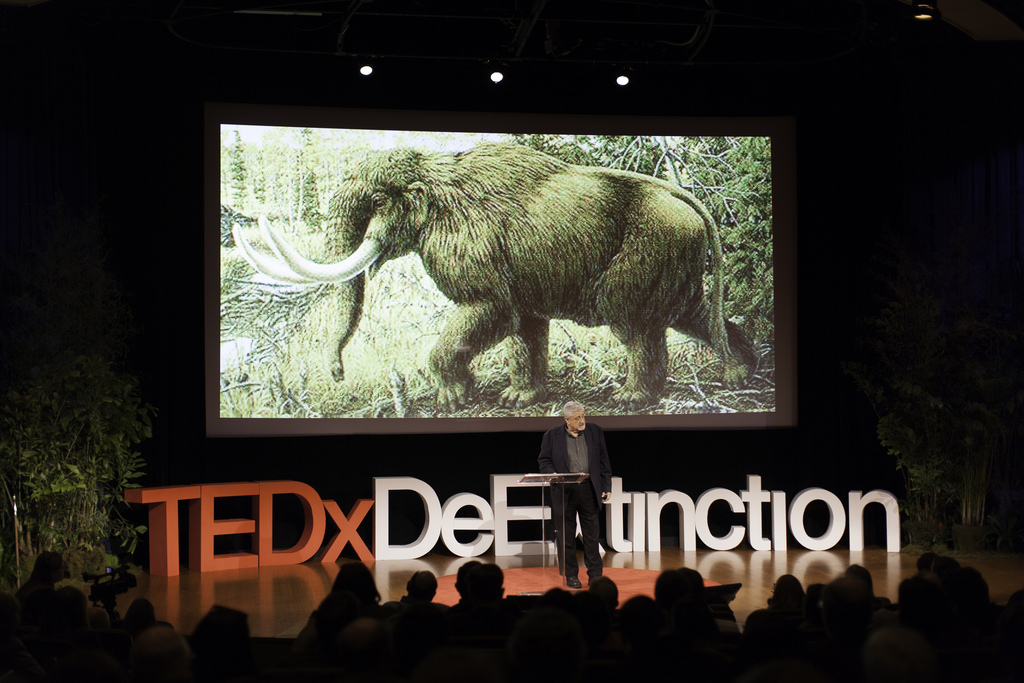
James Tate, an urban biologist, talks about the public policy of de-extinction and what laws affect bringing back a wooly mammoth and releasing it into the wild. Photo: Chelsey Gabrielson
How amazing would it be to see a wooly mammoth, raised from the dead, walking the permafrost of the North again? Or to look up at the sky and see a flock of passenger pigeons fly by? Or to witness a gastric-brooding frog hiccup tadpoles out the mouth from an embryo located in its stomach? These incredible animals, as well as others beyond our wildest imaginations, existed — walking whales, marsupial lions, carnivorous kangaroos and even crocodiles that climbed trees.
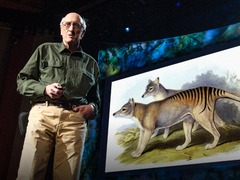 Stewart Brand: The dawn of de-extinction. Are you ready?
Stewart Brand: The dawn of de-extinction. Are you ready?
TEDxDeExtinction, held on March 15 in Washington, D.C., explored the fascinating possibility of bringing back extinct species. Organized by Stewart Brand and Ryan Phelan’s nonprofit Revive & Restore in conjunction with the National Geographic Society, the event was an all-day exploration of the biology, technology and ethics involved in de-extinction.
So what was it like? TEDxDeExtinction felt like stepping into a time machine that whipped me from the past to the future, and then back again, at high speeds. We leapt from the Pleistocene epoch (about 2,588,000 to 11,700 years ago) to the year 2080, then from1936 (when we killed off the last of the Tasmanian tigers) to tomorrow, when we’ll work towards completing the wooly mammoth genome.
As I watched the speakers in this strange bubble of mashed-up time, I became fascinated by the very human themes emerging in the narrative of de-extinction: the nature of wonder, which binds us not only to our ecosystem but to our hubris and hope. Wonder is both the catalyst and the goal of scientific progress, and asking questions about the things that amaze us opens new conversations that lead to innovation. When paleontogist Michael Archer peered at a baby thylacine, pickled in a jar of alcohol, he marveled at its potential. The alcohol was a DNA preservative and could be used to create a viable embryo. Ben Novak, the passenger pigeon expert, admired the passenger pigeon’s beauty and unique social behavior: “No book, no museum can give you the majesty of what this bird was.” And forensic paleontologist Hendrik Poinar’s childhood appreciation of the mammoth became a lifelong quest to figure out how to bring it back.
But asking the questions is the easy part. The most difficult task is answering them. A few of the speakers brought up valid criticisms of de-extinction and the costs it could have, especially on conservation. Stanley Temple described the future of species as a well-balanced three-legged stool; the legs are “protect,” “conserve” and “restore.” Now, we’re adding another leg, “revive,” so the balance needs to shift. David Ehrenfeld, a conservation biologist, believed we need to lose our arrogance and ease up on the hype of de-extinction because, in the end, it’s only “recreational conservation,” that negatively detracts from current conservation efforts. Plus, animal welfare might be an issue — revived species could negatively impact human health or became invasive to other species. And what happens when extinction is not forever?
Hank Greely also touched on the idea of whether this is something God (or even Darwin) would have wanted us messing around with. And Kate Jones, a conservation biologist who spent years creating an evolutionary tree of mammals, lamented the loss of evolutionary history that would occur with the resurrection of extinct species.
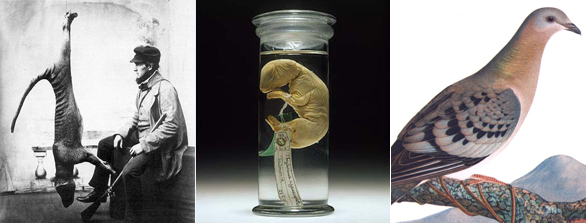
The last thylacine; a pickled thylacine pup preserved in alcohol; and the passenger pigeon.
Our role in the story of extinction has not exactly been heroic. We hunted the thylacine to death. The baiji, a freshwater dolphin living in the Yangtze River became extinct as its habitat grew polluted. Farmers thought Carolina parakeets were ruining their crops, so shot them to death. Would de-extinction be our way of righting a wrong? Or should we learn from our mistakes in trying to intervene and focus our efforts on conserving the endangered species that need our attention now?
One speaker who helped resolve these questions for me: evolutionary biologist Beth Shapiro, who explained that we still haven’t completed the first step of bringing back a wooly mammoth. We only know 3.8 billion base pairs of the genome, which is about 50% of the entire puzzle. She thinks de-extinction is a pipe dream, but a pipe dream worth pursuing. “This is going to stimulate a lot of research,” she said on-stage. “It’s going to bring together the conservationists, ethicists, molecular biologists, and people, like me, digging up bones in the permafrost to converse at the same table. We’ll learn about cloning, about genomes. We’ll learn about where genes are and how they interact with other genes. We’ll learn about what happens when genes from two different species come together.”
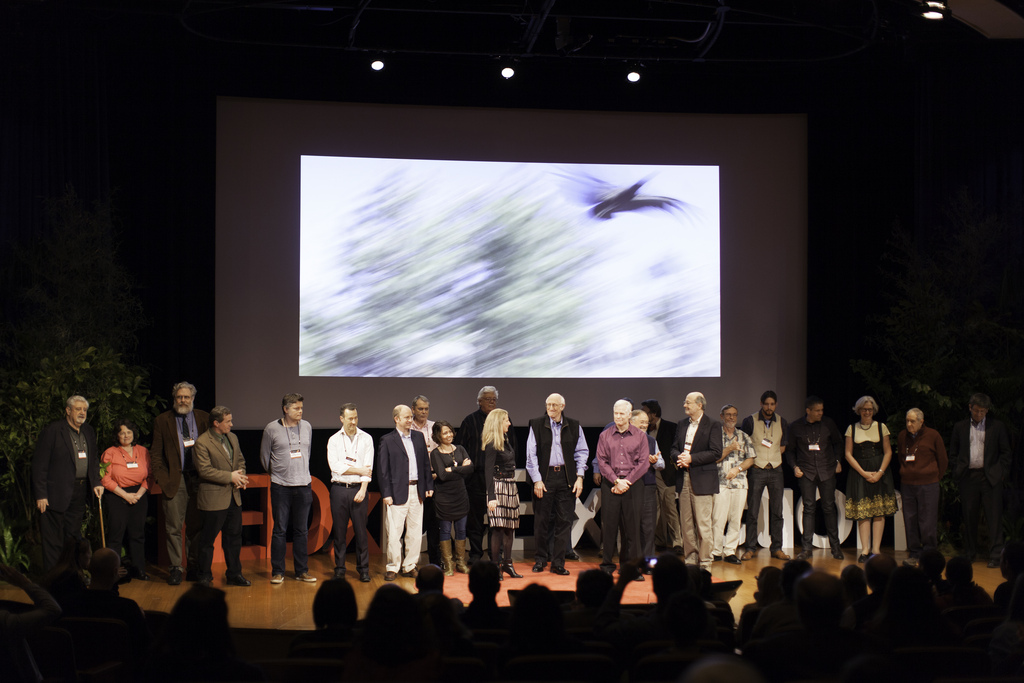
The speakers at TEDxDeExtinction take a bow. Photo: Chelsey Gabrielson
By the end of the day, I found that the question, “Should we de-extinct?” was answered with a resounding: “We have no choice.” The trajectory of scientific innovation, in the end, is unstoppable. But dizzied from my time travels, I worried that it was all happening too fast.
Ryan Phelan, co-host of TEDxDeExtinction, assured me that there will be enough time for discussion. “Things are moving slowly, right now. But, at some point, change is going to be exponential, just like the first computer,” she said. “Now, we have time to think: How do we shape the future that we want? How do we do it in a responsible way? There’s time for citizen participation.”
And that set my feet back down in the present.
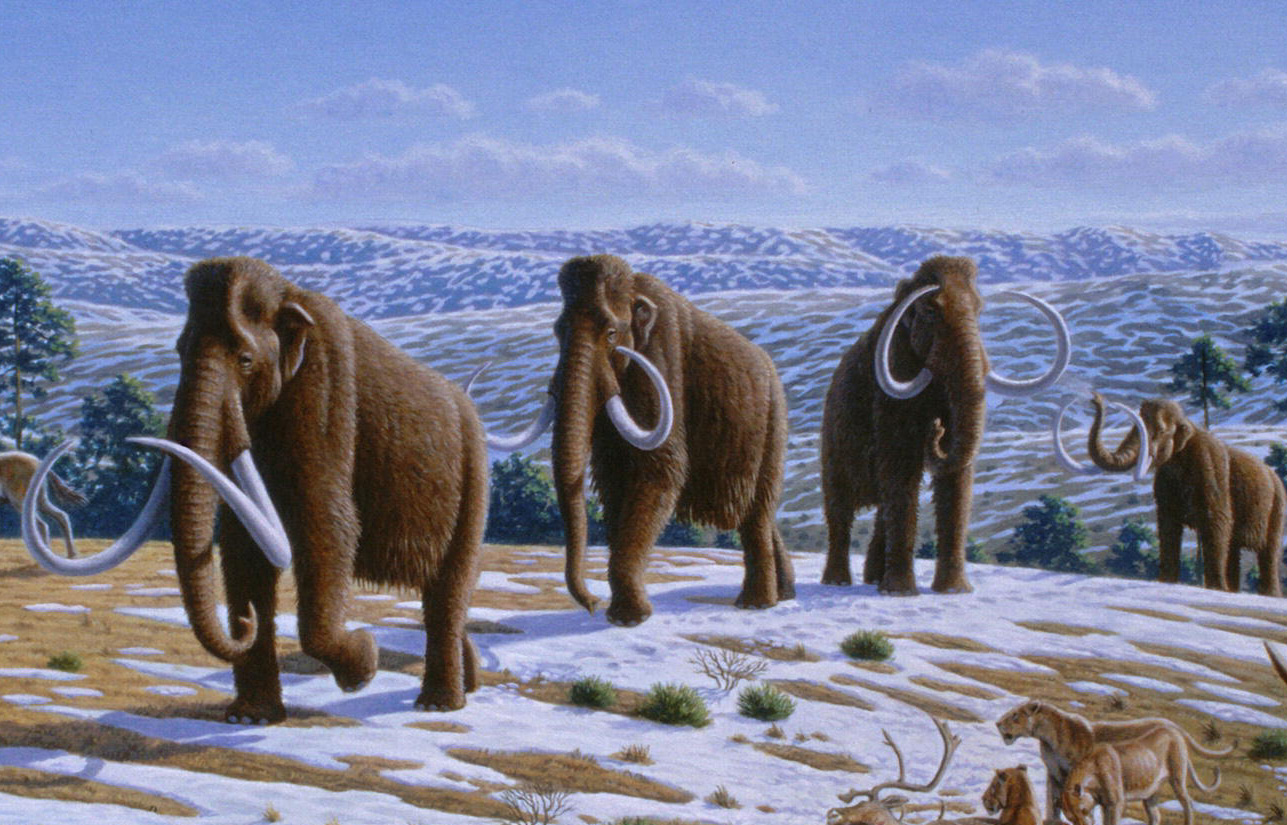
Comments (8)
Pingback: 2013: The Year in Ideas
Pingback: 2013: The Year in Ideas | BizBox B2B Social Site
Pingback: 2013: The Year in Ideas | Best Science News
Pingback: Woolly Mammoth With Preserved Blood Discovered – Should Scientists Attempt To Clone It?
Pingback: 10 fascinating facts about woolly mammoths | Krantenkoppen Tech
Pingback: 10 fascinating facts about woolly mammoths | BizBox B2B Social Site
Pingback: De-Extinction: Bringing Back the Dead | Living Sea SculptureLiving Sea Sculpture